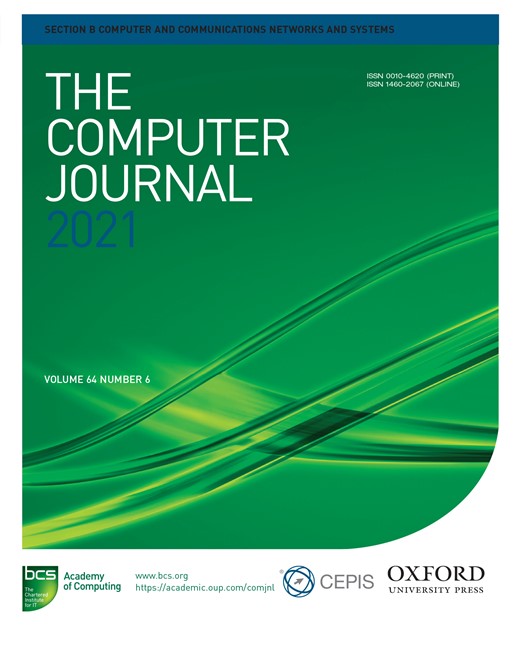-
Views
-
Cite
Cite
Jun Yuan, Aixia Liu, Xi Wang, The Relationship Between the g-Extra Connectivity and the g-Extra Diagnosability of Networks Under the MM* Model, The Computer Journal, Volume 64, Issue 6, June 2021, Pages 921–928, https://doi.org/10.1093/comjnl/bxaa200
Close - Share Icon Share
Abstract
Motivated by |$g$|-extra connectivity, the |$g$|-extra diagnosability is proposed as a better and more realistic measurement for fault diagnosis of interconnection networks, which is defined as the maximum number of faulty vertices that can be identified when each remaining component has no fewer |$g+1$| vertices. Under the MM* model, a variety of interconnection networks’ |$g$|-extra diagnosability have been investigated, such as hypercube, folded hypercube, |$(n,k)$|-star network, alternating group graph, etc. These results mostly share similar derivation processes to derive the |$g$|-extra diagnosability of involved networks by using the |$g$|-extra connectivity. Therefore, a general approach to derive the |$g$|-extra diagnosability of a network from its |$g$|-extra connectivity was investigated in (Wang, S. Y. and Wang, M. (2019) The |$g$|-good-neighbor and |$g$|-extra diagnosability of networks. Theor. Comput. Sci., 773, 107–114) and (Huang, Y. Z., Lin, L. M. and Xu, L. (2020) A new proof for exact relationship between extra connectivity and extra diagnosability of regular connected graphs under MM* model. Theor. Comput. Sci., 828–829, 70–80). However, there are some shortcomings in both references. By summarizing the existing shared practices, we propose a new relationship between the |$g$|-extra connectivity and the |$g$|-extra diagnosability of networks under the MM* model. As applications, we derive the |$g$|-extra diagnosability of bijective connection networks and |$(n,k)$|-star graphs.




